Nate's reviews and writings
Rayman 3D
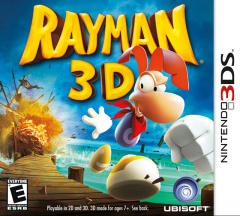 Platformers may be my favorite genre. Maybe I'm a product of the era I
grew up in, when so many developers tried to beat Super Mario Bros. at
its own game. Most failed, but that didn't stop me from enjoying the
multitude of games that celebrated the uncomplicated joy of running and
jumping skillfully across tricky terrain.
Platformers may be my favorite genre. Maybe I'm a product of the era I
grew up in, when so many developers tried to beat Super Mario Bros. at
its own game. Most failed, but that didn't stop me from enjoying the
multitude of games that celebrated the uncomplicated joy of running and
jumping skillfully across tricky terrain.That said, the move from sprites to polygons did not treat the platformer kindly. So many of the colorful characters that were born in two dimensions were simply confounded by a third axis. I can only think of a handful of 3D platformers I've really enjoyed, and almost all of them begin with the words "Super Mario." To be fair, my standards are very high, and my definition of "platformer" is quite narrow as well.
And I've missed out on more than a few fondly-remembered 3D platformers, one of which is Rayman 2: The Great Escape. Originally released for the Nintendo 64 and Dreamcast, Rayman's first sequel (and first step into 3D) has become a cult classic of sorts. It's at least popular enough for Ubisoft to revive the game for the 3DS, just as it had seven years ago for the launch of the original Nintendo DS. Actually, according to Wikipedia, this game has been ported from the Nintendo 64 to Nintendo DS, Nintendo 3DS, PlayStation, PlayStation 2, Dreamcast, iPod Touch, and PC, in sum.
So how does Rayman 2 hold up after ten years and two ports to a picky platforming purist like me? And do the 3DS' stereoscopic visuals add a significant difference to the experience, as Nintendo claimed they could?
Roxio Game Capture
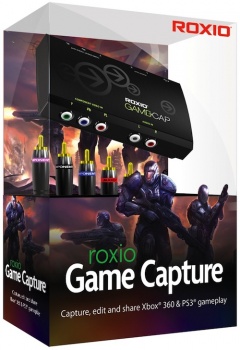 Video editing isn't easy. It's not cheap. And it's rarely fun. Such is
the extent of my knowledge on the subject, after some attempts to
transfer old home movies from VHS onto DVDs.
Video editing isn't easy. It's not cheap. And it's rarely fun. Such is
the extent of my knowledge on the subject, after some attempts to
transfer old home movies from VHS onto DVDs.But video editing is an integral part of video game marketing and communications. Publishers concoct trailers from snippets of gameplay (and CG), news outlets provide their readership with video previews, and even gamers themselves show their stuff on YouTube. Whatever the purpose, a way to capture, clip, and combine footage is required.
I had been looking into cheap and easy ways to record game video from my TV screen when I came across the recently released (and aptly named) Roxio Game Capture. Requiring only component cables and a decent PC, the $99 device seemed to be a suitable reintroduction to the harsh world of video editing for me. The folks at Roxio were kind enough to provide The First Hour with one Game Capture (and the included Roxio VideoWave software). After tinkering for several hours, I've grabbed various vids from my TV screen, slapped together some clips in the editing suite, and remembered the headaches that accompany learning to patch together movies.
Steel Diver
 Any time a creator of game technology sets a new standard, they want to
show it off in a way that gets potential customers dreaming about what
games they might be playing with it. The Final Fantasy VII tech demo for
PS3 was meant to show off the graphical leap that Sony's
Spiderman-fonted grill console could muster...and, of course, hype fans
up for a remake that would never exist. Peter Molyneux's Milo was a
proof of concept that Kinect could, theoretically, be an interaction
simulator. With the game's cancellation, it looks like that will stay a
theory for the time being. And who could forget Epic's "meat cube" demo
for Unreal Engine 3, newly improved for Gears of War 2? And yet, here we
are in 2011 with no cubes of messy meat to play with whatsoever.
Any time a creator of game technology sets a new standard, they want to
show it off in a way that gets potential customers dreaming about what
games they might be playing with it. The Final Fantasy VII tech demo for
PS3 was meant to show off the graphical leap that Sony's
Spiderman-fonted grill console could muster...and, of course, hype fans
up for a remake that would never exist. Peter Molyneux's Milo was a
proof of concept that Kinect could, theoretically, be an interaction
simulator. With the game's cancellation, it looks like that will stay a
theory for the time being. And who could forget Epic's "meat cube" demo
for Unreal Engine 3, newly improved for Gears of War 2? And yet, here we
are in 2011 with no cubes of messy meat to play with whatsoever.Sometimes, what starts as a tech demo eventually becomes a retail product. Such is the case with Steel Diver, possibly the only submarine video game I know of. What is now a 3DS launch title was originally meant to show off the brand new use of the touch screen as a controller...six years ago, for the original Nintendo DS. It seems Nintendo decided to take that aged tech demo, update its visuals for the new hardware, and profit.
So here we are at the 3DS launch, with three first party retail titles from Nintendo. One appears to merely be a graphical update to the Nintendo DS' second best-selling game. Another seems to be made entirely of assets from Nintendo's ridiculously successful Wii Sports series. Could Steel Diver, a tech demo that was forgotten a generation ago, prove to be a niche hit lurking in the depths, or will it continue to torpedo into obscurity?
Tom Clancy's Ghost Recon: Shadow Wars
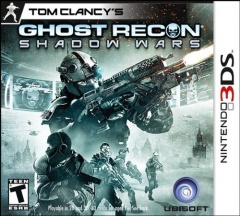 As much as Nintendo frustrates me with their recent localization
decisions, they have their triumphs as well. Releasing Sin &
Punishment on the Virtual Console outside of Japan was a victory,
effortless as it might have been. Rhythm Tengoku was a niche hit on the
Game Boy Advance, but its DS follow-up had even Beyonce singing its
praises. And when Nintendo finally brought its Famicom Wars and Fire
Emblem strategy games to the west on the GBA, gamers outside of Japan
suddenly had two new franchises to thank the Big N for.
As much as Nintendo frustrates me with their recent localization
decisions, they have their triumphs as well. Releasing Sin &
Punishment on the Virtual Console outside of Japan was a victory,
effortless as it might have been. Rhythm Tengoku was a niche hit on the
Game Boy Advance, but its DS follow-up had even Beyonce singing its
praises. And when Nintendo finally brought its Famicom Wars and Fire
Emblem strategy games to the west on the GBA, gamers outside of Japan
suddenly had two new franchises to thank the Big N for.And they're not the only ones: Julian Gollop, creator of the X-COM: UFO Defense series, is a big fan of Advance Wars and Fire Emblem. He said as much in a refreshingly candid interview about his newest game, Ghost Recon: Shadow Wars, a 3DS launch title that Gollop was inspired to create after experiencing Nintendo's strategy duo.
I've had only brief experiences with the strategy genre as it exists on PC, where Gollop's games mostly reside. And I've played maybe ten minutes of a Ghost Recon game. But I am a big fan of games like Advance Wars: Dual Strike and Fire Emblem: Path of Radiance. And though I'm eager to see what Nintendo has in store for those franchises in the future, I know what I'll be getting: more of the same. On the other hand, Gollop's take on turn-based tactics might introduce some fresh elements to the formula. Let's see if any of those show up within the game's first thirty minutes.
Pilotwings Resort
 The island from Lost is its own character. It's mysterious, malevolent,
and seemingly sentient. It's more than just a setting, interacting with
each of the show's characters as much as any other person stranded
there.
The island from Lost is its own character. It's mysterious, malevolent,
and seemingly sentient. It's more than just a setting, interacting with
each of the show's characters as much as any other person stranded
there.Nintendo wants WuHu Island to be like that. Well, sort of. Not the evil part, of course. Where the island from Lost is a place full of peril, pitfalls, and plotholes, WuHu Island is familiar, comfortable, and friendly. It is supposed to be like a favorite character, an entity that the player reminisces with every time they meet. That's why it's already shown up in three different casual Nintendo titles (Wii Fit, Wii Sports Resort, and Wii Fit Plus).
Make that four, as Nintendo brings Mii back to WuHu island, this time exclusively for airborne activities in Pilotwings Resort. Pilotwings is no stranger to acting as the "tech demo" launch title for new visual splendor; the original SNES game introduced the world to Mode 7 Mapping while its Nintendo 64 sequel showed off the new system's polygonal graphics from a birds' eye view.
This will be my second visit to WuHu Island, after the WiiMotion+ showcase that was Wii Sports Resort. There was a certain charm to staging the various activities around the island, full of recognizable landmarks and curiosities. However, it could just as easily be argued that this is all laziness on Nintendo's part, recycling assets they created years ago across a number of games. Will a half-hour at WuHu Island rekindle warm memories of jet skis and archery or has this vacation hotspot gone cold?
Nintendo 3DS first impressions
 When I first take home a new system, I like to get a feel for it
before I play my first game. I check out the menus, play with the
options, and poke around for Easter eggs. I imagine most people brought
home their Gamecubes with the intention of checking out the newest Death
Star visuals ASAP, but I had just as much fun wandering around the
system's cube-shaped GUI for the first time. The 3DS is no different.
Before I popped in one of the launch titles, I took some time to
feel out every nook and cranny on Nintendo's newest portable system.
When I first take home a new system, I like to get a feel for it
before I play my first game. I check out the menus, play with the
options, and poke around for Easter eggs. I imagine most people brought
home their Gamecubes with the intention of checking out the newest Death
Star visuals ASAP, but I had just as much fun wandering around the
system's cube-shaped GUI for the first time. The 3DS is no different.
Before I popped in one of the launch titles, I took some time to
feel out every nook and cranny on Nintendo's newest portable system.This is a special case for two reasons. The obvious quirk is the system's ability to display 3D visuals without the need for special eyewear. Am I going to get headaches? My personal history with 3D movies says I'll have some cranial pounding and eye discomfort for a few minutes, then an unhindered experience following the adjustment period. On the other hand, when I checked out a 3DS kiosk at Best Buy for about 15 minutes, I had a headache for the next two hours. I'm willing to bet the experience won't be as bad in the comfort my own home. I'm gambling $250 on it, to be exact.
The second consideration is the apparent multitude of unorthodox, playful features that are bundled in with the system. Early reports have noted that there are a number of built-in features and games involving the system's cameras, data transfer tools, and other special features; there are even augmented reality cards that you'll be able to fool around with right out of the box.
I've poked around the 3DS menus for about an hour before checking out my first game. Here's what I found.
Retiring my Nintendo DS Lite
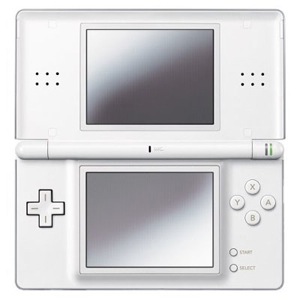 The Nintendo DS was the first game system that I followed from
announcement to launch. It was way back early 2004 that Nintendo first
hinted at a dual-screened handheld, then codenamed "Nitro." Considering
that was the only information available, it's not surprising that many
questioned Nintendo's strategy. Why two screens? Nintendo offered some
hypothetical benefits, like extra camera angles for sports games, but
their words were hardly convincing. Little did we know, it was
Nintendo's first step into the "blue ocean" strategy that would lead the
company to greener pastures.
The Nintendo DS was the first game system that I followed from
announcement to launch. It was way back early 2004 that Nintendo first
hinted at a dual-screened handheld, then codenamed "Nitro." Considering
that was the only information available, it's not surprising that many
questioned Nintendo's strategy. Why two screens? Nintendo offered some
hypothetical benefits, like extra camera angles for sports games, but
their words were hardly convincing. Little did we know, it was
Nintendo's first step into the "blue ocean" strategy that would lead the
company to greener pastures.And yet, the original DS launch in November 2004 came and went with little fanfare. I was aware of the date, but didn't even realized that it arrived until I walked through a Wal-Mart electronics section and saw the grey handheld on the shelves. I kept walking. I was Nintendo faithful, sure, but it was hard to get excited about a launch lineup headlined by something nearly a decade old. It wasn't until the impending release of Kirby Canvas Curse in the summer of 2005 that I decided to bite the bullet, trading in half of my Gamecube library to GameStop in order to pay off the Nintendo DS and one game.
While it's certainly worth praise in its own right, I think Canvas Curse deserves to be remembered as the flagship of the DS library; it was the first of a fleet of incredible games that would follow in its wake. A system redesign, dubbed the DS Lite, accompanied the platform's newfound software vigor. Reduced size, brighter screens, and an iPod aesthetic provided enough worth for many to upgrade (including me) and many more to buy in for the first time. The sleeker profile and beefier games are what truly began the success story of the best-selling handheld game system ever.
But even Nintendo's first detour in the generations-old graphical arms race would lead to a dead end eventually. With the launch of a successor, the 3DS, history tells us that the best we can hope for is a year or two of life support for what was once Nintendo's "third pillar." It was an incredible performance that none could have predicted, and I think the Nintendo DS deserves a hearty round of applause before its curtain call. I've decided to contribute to the celebration in that age-old tradition of blogging: the top ten list.
In no particular order, here are ten great games that exemplified some aspect of the Nintendo DS' legacy.
Nelson Tethers: Puzzle Agent
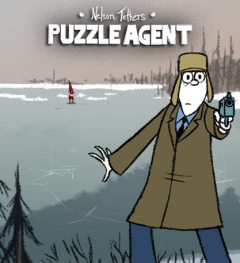 Nintendo has made a killing packaging classic pen-and-paper activities into DS games. Picross, Sudoku, Crosswords...but one of the major successes is the Professor Layton series. Developed by Level 5 and published by Nintendo outside of Japan, the franchise tasks players with solving puzzles and riddles in order to explore a storyline brimming with mystery. The puzzling travels of Professor Layton and his apprentice Luke are a hit with casuals and hardcore alike, selling over ten million units worldwide between the series' five titles.
Nintendo has made a killing packaging classic pen-and-paper activities into DS games. Picross, Sudoku, Crosswords...but one of the major successes is the Professor Layton series. Developed by Level 5 and published by Nintendo outside of Japan, the franchise tasks players with solving puzzles and riddles in order to explore a storyline brimming with mystery. The puzzling travels of Professor Layton and his apprentice Luke are a hit with casuals and hardcore alike, selling over ten million units worldwide between the series' five titles.
Of the three titles available outside Japan, I've only played the first, Curious Village. It's certainly full of cranium-crunching riddles, but I wasn't as taken by the rest of the package as many were. Decent production values aside, there wasn't much that impressed me from the strange story of Layton, Luke, and the peculiar villagers. I'd almost wished the game was a more sterile package, like so many other brainy DS productions. Most would probably disagree, seeing the worth in framing these teasers within a narrative.
Enter Nelson Tethers: Puzzle Agent. I bought this budget PC title in -- what else? -- a Steam bundle during the holiday season. Nelson clearly took notes from one of the Professor's lectures, because Puzzle Agent's premise is very similar to Curious Village, having the player explore a mysterious little town by solving riddles for its puzzle-obsessed populace. But unlike Curious Village, I actually enjoyed the overall experience even more than the puzzles that pervade it.Prince of Persia: The Forgotten Sands
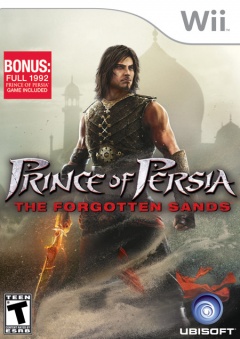 Hollywood and video games have never had a healthy relationship. Ever
since the Super Mario Bros movie ruined millions of childhoods, video
game franchises of all kinds have received blasphemous silver screen
adaptations. The latest mainstream abuse of a video game license comes
from Prince of Persia: The Sands of Time. I'm not one to praise the
narrative of most games, but I really enjoyed the bittersweet fable of
the Prince and Farah that the 2002 hit presented. I've heard less
favorable things about the movie, and I don't think I want to see how it
ended up.
Hollywood and video games have never had a healthy relationship. Ever
since the Super Mario Bros movie ruined millions of childhoods, video
game franchises of all kinds have received blasphemous silver screen
adaptations. The latest mainstream abuse of a video game license comes
from Prince of Persia: The Sands of Time. I'm not one to praise the
narrative of most games, but I really enjoyed the bittersweet fable of
the Prince and Farah that the 2002 hit presented. I've heard less
favorable things about the movie, and I don't think I want to see how it
ended up.
The existence of Prince of Persia: The Forgotten Sands is the result of one of the strangest cross-media cycles I've ever seen. The Forgotten Sands, a sequel to the Sands of Time video game, was released alongside the Sands of Time movie, an unrelated adaptation of the Sands of Time video game. Even stranger, Sands of Time already has a pair of sequels (Warrior Within, and The Two Thrones), but Forgotten Sands apparently precedes them. Even strangerer, the Wii version of Forgotten Sands is actually an alternate tale to the version of the game available for PS3, 360, and PC!
I'm still trying to wrap my head around all that. The plotline of the Sands Trilogy was already mind-bending enough with all the time travel going on, but now Hollywood's gone and made everything worse! Oh well. I guess the more pressing topic at hand is just how forgettable Forgotten Sands is on the Wii.Tales of Legendia
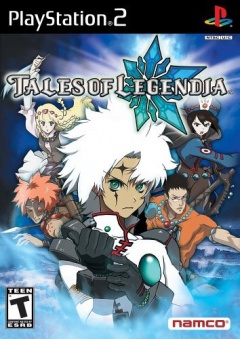 As you might expect from someone whose primary consoles went from
Genesis to N64 and Gamecube, Japanese RPGs have never been my forte.
Though I've played bits and pieces of many, I'm having a hard time
thinking of a traditional JRPG cast in the menu-driven, Final Fantasy mold that I've
started and finished all by myself. Chrono Trigger may be the only title
that comes to mind.
As you might expect from someone whose primary consoles went from
Genesis to N64 and Gamecube, Japanese RPGs have never been my forte.
Though I've played bits and pieces of many, I'm having a hard time
thinking of a traditional JRPG cast in the menu-driven, Final Fantasy mold that I've
started and finished all by myself. Chrono Trigger may be the only title
that comes to mind.
Many of the RPGs from the land of the rising sun that I've completed are better described as Action RPGs (The World Ends With You, Mario & Luigi series). And if I had to name a favorite, it would probably be Tales of Symphonia. This Gamecube exclusive from Namco quickly enamored me with its excellent mix of real time combat and menu-based management. I don't think I'd ever had so much fun in a JRPG: the exciting dodges, blocks, and combos in brawls on the front lines were perfectly complemented by magic, item, and strategy commands for party members through the pause menu. It's the finest marriage of Action and RPG I've come across.
I've only played the two Symphonia-branded titles in the storied Tales series, so I decided it was time to pick up another. I remembered hearing about Tales of Legendia for the PS2 back when it hit shelves for the first time, so I figured I'd pick it up now that I'm in the mood for a fat, juicy adventure. Does it live up to its franchise name, or is this Tale not worth the time?
